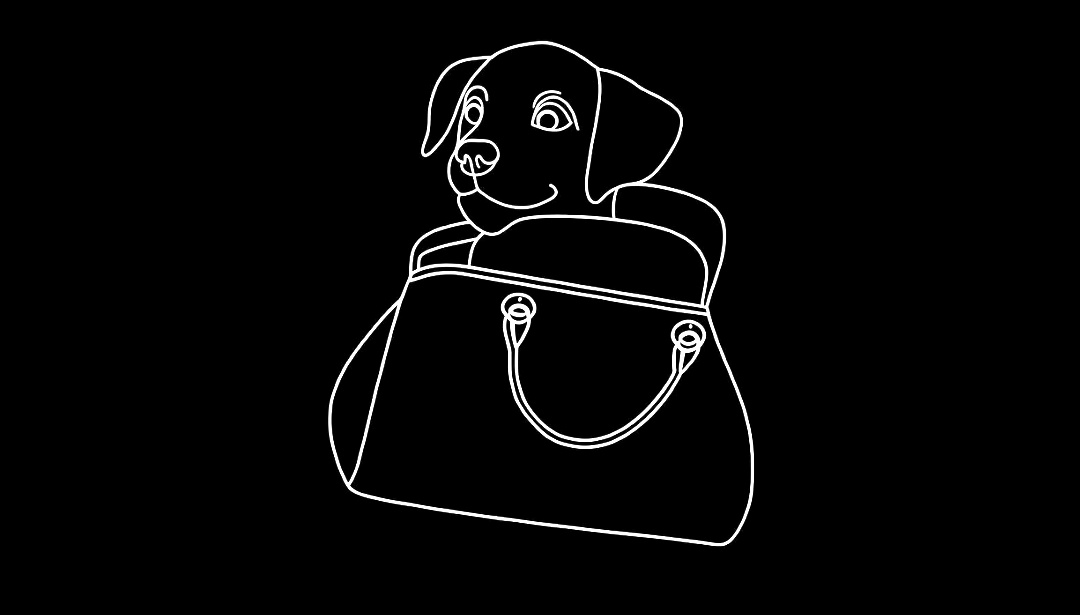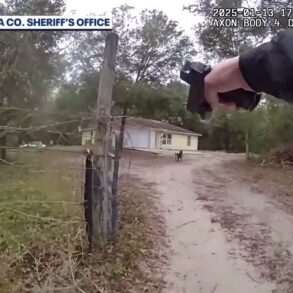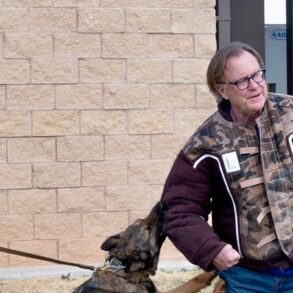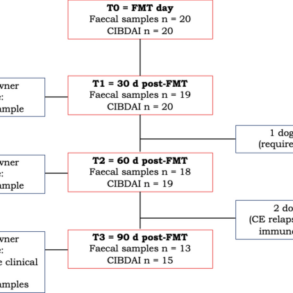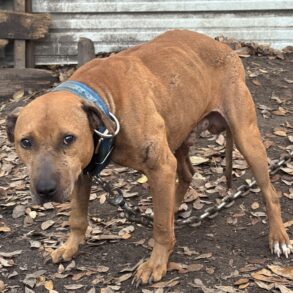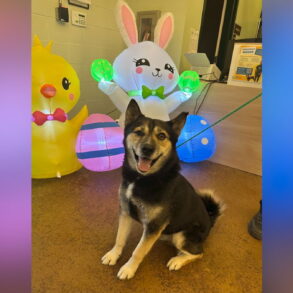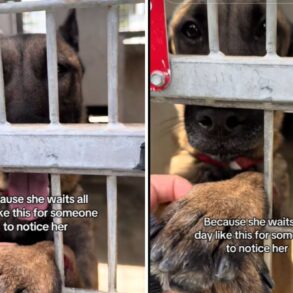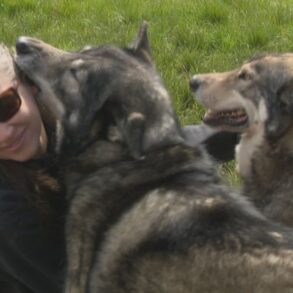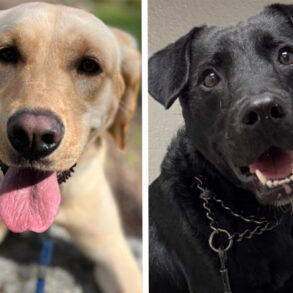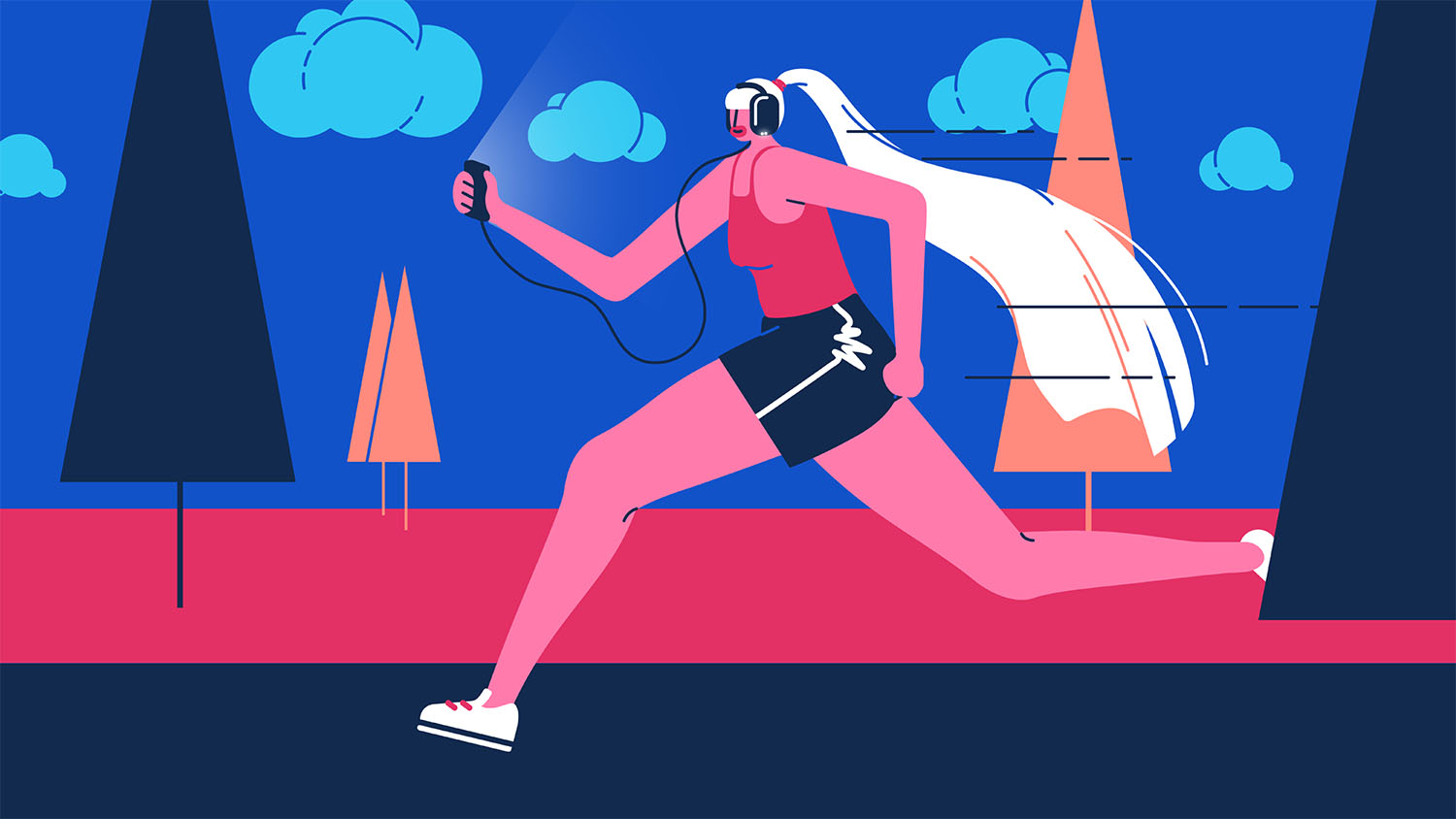Picture this: You come home from work, eager for a quiet and relaxing evening, but as you open the door, you find an unimaginable amount of pillow fluff coating the living room, as if the biggest snow globe just exploded.
In the background is Rover. He greets you with a lowered head and tail, squinty eyes and pinned-back ears. His body language has the word “guilty” plastered all over it as you think, “Aha! I just caught you red-pawed! You know what you did!”
But do dogs really feel guilty? You would think so based on your dog’s body language and facial expressions, right?
Related: How to Train a Stubborn Dog When You’re at Your Wits’ End
Some years back, a video took the internet by storm. The video portrayed Denver, a dog who was often shown getting in some form of mischief and then displaying “guilty” body language that seemed to scream, “It was me! I’m so sorry! Please still love me!”
This sweet dog surely yielded many laughs, but let’s talk science. A famous study by dog cognition researcher Dr. Alexandra Horowitz in 2009 revealed some interesting findings on whether dogs have any true canine sense of moral wrongdoing that prompts the so-called “guilty look.”
First Off, What Exactly Is a “Guilty Look” in Dogs?
The so-called “guilty look” in dogs comprises a set of signals that are often interpreted as undeniable proof of guilt. What does it look like exactly? Here are some classical features with some common human interpretations:
Advertisement
Advertisement
-
Avoidance of eye contact (interpreted as proof of the dog hiding something)
-
Lowered head (interpreted as the dog not being able to face the truth)
-
Lowered body posture (interpreted as the dog feeling remorse/embarrassment)
-
Ears pulled back (interpreted as the dog saying, “Uh-oh, I just got caught”)
-
Tucked tail (interpreted as the dog knowing he’s in trouble)
-
Lip licking (interpreted as the dog being nervous because he knows he did something bad)
-
Walking away slowly (interpreted as the dog leaving the “crime scene”)
-
Rolling over (interpreted as the dog begging for forgiveness)
-
Submissive grin/showing teeth (interpreted as proof of shame)
Did You Know?
A 2008 study found that as many as 74% of dog owners really believed that their dogs were capable of feeling guilty.
Study Puts a Dog’s “Guilty Look” Under Scrutiny
Horowitz’s 2009 study analyzed the behavior and body language of 14 dogs who were videotaped after being told not to eat a tempting treat while the owner was out of the room.
Upon returning to the room, dogs who were scolded by their owners looked “guilty,” even if they did not eat the treat. Ironically, the dogs who didn’t eat the treat displayed more “guilty” body language compared to the dogs who actually did.
The results of this study strongly suggest that the “guilty look” is simply a response to the owners’ emotions, tone of voice and/or body language than the dogs’ own past behavior.
If Not Guilt, Then What?
The fact that the dogs in the study displayed “guilty” body language even when they were completely innocent (they didn’t touch the treat) suggests that there must be something else going on. If it’s not guilt, then what are the dogs feeling?
Turns out that all of the signals that fall under the “uh-oh” body language are actually appeasement gestures rather than signs of guilt. The “guilty signs” listed above are, therefore, greatly misinterpreted.
Here is what dogs may truly be trying to communicate:
Advertisement
Advertisement
-
Avoidance of eye contact (I am not looking for a confrontation)
-
Lowered head (Please do not escalate)
-
Lowered body posture (Please, I want to avoid conflict)
-
Ears pulled back (I mean no harm)
-
Tucked tail (I am feeling a little scared)
-
Lip licking (I am feeling stressed)
-
Walking away slowly (I am trying to avoid trouble )
-
Rolling over (Please, let’s de-escalate)
-
Submissive grin/showing teeth (I’m feeling stressed or unsure)
That guilty look? It’s more likely saying, “You look mad, and I’m trying my best to keep things cool.”srmr1977
Anthropomorphism: A Double-Edged Sword
Anthropomorphism is a term used to describe our natural predisposition to expect animals to behave like us and feel the same emotions we do.
On one hand, anthropomorphizing can be a good thing, as it helps us recognize that dogs, just like us, are equipped with a nervous system and are sentient beings who experience emotions that warrant our compassion and understanding.
However, things can quickly snowball when we attribute to them complex human emotions that dogs are incapable of feeling. Certain assumptions can lead to deep misunderstandings, which can negatively impact the human-dog bond.
Don’t Assume Complex Secondary Emotions
Take, for instance, other common secondary emotions/feelings that we may wrongly attribute to dogs, such as spite, stubbornness, revenge, shame, envy, embarrassment, sneakiness and even malice.
We may assume a dog destroys stuffed pillows out of spite when we leave them home alone. Perhaps we think they are “trying to get back at us” for not taking them along with us. In reality though, the dog may be acting destructively out of boredom or simply because they haven’t exercised enough.
Similarly, when a dog has a pee or poop accident in the house, we may assume he’s ashamed when we come home or is “revenge pooping,” when in reality, he may have just been confused by a recent change in routine, or perhaps he’s anxious.
Rather than assuming dogs are driven by complex intentions like revenge or malice, it’s far more productive to focus on their emotional and behavioral needs so that we can help them better navigate their feelings of stress, boredom or unmet needs.
Dogs Interpret Our Own Emotions
When it comes to anthropomorphism, it’s important not to swing too far in either direction. We should treat our dogs with compassion and respect without literally imagining them as people on four legs.
Here’s the thing: Dogs have the uncanny ability to understand our emotions. Our body language, facial expressions, tone of voice and body posture speak volumes. Just as dogs can detect when a storm is brewing, they can learn to associate specific body language cues with our emotional states.
So when you raise an eyebrow and hold up a ripped slipper as if it’s a piece of important forensic evidence, your dog isn’t thinking, “Oh my, I’ve been caught!” Instead, they’re likely reacting (in fear) to your tone of voice, your body language and the whole situation itself.

So Do Dogs Really Know When They Did Something Wrong?
It depends on what we consider “wrong.” Dogs do not “know” they did something wrong in the way humans understand wrongdoing.
For example, in order for your dog to know whether he did something wrong, such as chewing on your expensive pair of stilettos, he would need to have a sense of moral conduct.
But here’s the problem: Dogs don’t comprehend abstract concepts like the value of the shoe, the notion of ownership (despite the item being readily accessible) and that their natural behavior of chewing is unacceptable in a moral sense.
Dogs simply aren’t wired to understand this kind of abstract thinking or moral reasoning. What they do understand is what results in pleasant or unpleasant consequences, but only if they occur very close in time to the behavior.
Advertisement
Advertisement
If you come home and get upset with your dog for chewing your pillow into zillions of pieces, he will struggle to connect the emotional response you’re showing with an action that occurred hours before.
Here’s the scoop: In order for punishment to be effective, it should be administered within 2 seconds of the beginning of the unwanted behavior. If you punish your pet hours later, it won’t correct anything, explains board-certified veterinary behaviorist Dr. Sabrina Poggiagliolmi.
Beyond this window, dogs aren’t learning what not to do. They’re simply reacting to a human who seems unpredictably upset, which triggers them to respond with appeasement signals like avoiding eye contact or slinking away.

Dogs struggle to understand abstract concepts such as the notion that taking something that belongs to someone else is wrong, especially when it’s readily accessible.
Should I Punish My Dog When I Catch Him in the Act?
No. While punishment may seem like a suitable instinctive reaction to carry out at the moment, it comes with some “side effects.” In a nutshell, it can have unintended consequences that may be worse than the current problem you are dealing with.
For example, if you punish your dog right when he’s peeing in your home, even if he’s caught “in the act,” your dog may not learn that the behavior itself is wrong. Instead, he may learn that peeing in your presence is unsafe.
The end result? Your dog may sneak off to another room or wait until you’re not around to pee. This doesn’t solve the underlying issue and can complicate all of your potty training efforts.
Furthermore, research has found that the use of punishment may lead to anxiety and negative welfare implications. It may impact the dog-owner bond, paving the way for trust issues.

How Can I Teach My Dog Right From Wrong?
Fortunately, there are several productive ways to help your dog make fewer “mistakes” and learn how to make good choices. Here are some examples of how you can help your dog learn “right from wrong” without negative outcomes:
Implement Management
Dogs often get stuck in a cycle of repeating behaviors that we find undesirable for the simple fact that we don’t take steps to prevent them from happening. Need an example?
If your dog loves chewing on your shoes, you can’t expect him to stop if you keep on leaving your shoes around.
Chewing is a species-specific behavior that is naturally reinforcing, meaning that dogs feel good when they get to chew. That’s just part of being a dog.
Therefore, to help your dog succeed, you should stop leaving your shoes around. With the shoes out of sight, your dog no longer has the opportunity to rehearse the problematic behavior over and over.
Provide Outlets for Natural Behaviors
Because dogs are pre-programmed to engage in a variety of natural, species-specific behaviors, such as digging and chewing, it’s important that they are offered outlets for these natural behaviors.
For example, if your dog loves to chew on your pillows when he’s left home alone, make sure to keep the pillows out of reach and offer a variety of appealing chew toys inside a playpen so that he can only make good choices. Rotate the toys to keep your dog’s interest in them alive.
If your dog loves to dig right by your vegetable garden, erect a fence so that he can no longer dig there. Instead, provide an easy-to-access digging pit that is filled with soft sand and your dog’s favorite toys.
Train Alternate Behaviors
Is your dog begging at the table during dinner? You can teach him to go lie on a mat instead and enjoy a stuffed Kong there.
Does your dog jump on guests? You can train him to sit and reward him with a tasty treat so that he becomes increasingly motivated to sit.
Is your dog barking at the mailman? You can teach him to look at you rather than stare at the mailman and receive tasty treats for making eye contact with you.
As a general rule, behaviors that are rewarded tend to strengthen and repeat, while behaviors that aren’t rewarded will weaken and eventually extinguish.
Get Professional Help
If you are still struggling to teach your dog to perform desirable behaviors, don’t hesitate to consult with a certified professional dog trainer or a behavior specialist. Some dogs need extra incentives, while others may be too anxious or fearful to learn.
The Bottom Line
As we’ve seen, dogs don’t really know when they’ve done something wrong unless you’re right there in front of them pointing it out to them. Even then, the risks of not making the correct associations between the behavior and consequence often outweigh the benefits.
And that “guilty look”? Don’t take that at face value. It’s more like a heartfelt apology, almost as if the dog were saying something like “I have no idea what I did wrong, but I can tell you’re super upset.”
The moral of the story? Manage your dog’s environment so that he’s not repeatedly making the same mistakes, and then teach him what you would like him to do instead. Your dog isn’t being sneaky … he’s likely just trying to survive your “slipper sermons.”
Up Next:
References
-
Pickersgill O, Mills DS, Guo K. Owners’ Beliefs regarding the Emotional Capabilities of Their Dogs and Cats. Animals (Basel). 2023 Feb
-
Hiby, Elly & Rooney, Nicola & Bradshaw, J. (2004). Dog training methods: Their use, effectiveness and interaction with behaviour and welfare. Animal Welfare
-
Kujala, M.V. (2017). Canine emotions: Guidelines for research. Animal Sentience: An Interdisciplinary Journal on Animal Feeling, 2, 144
-
Lewis, M.D., & Granic, I. (2002). Emotion, Development, and Self-Organization: Dynamic Systems Approaches to Emotional Development. Cambridge University Press: New York
-
P. Ekman, D. Cordaro What is meant by calling emotions basic Emot. Rev., 3 (4) (2011), pp. 364-370
-
Guo, Kun & Correia-Caeiro, Catia & Mills, Daniel. (2024). Category-dependent contribution of dog facial and bodily cues in human perception of dog emotions. Applied Animal Behaviour Science.
This post was originally published on this site be sure to check out more of their content.
